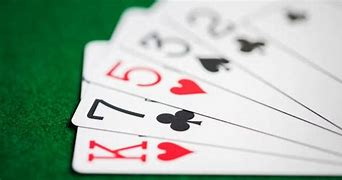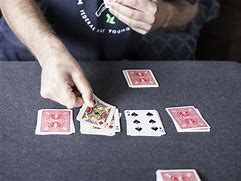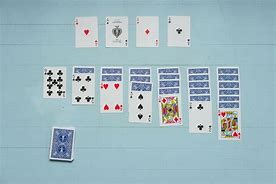Content Menu
● Understanding the Basics of Solitaire
● Setting Up the Game
● Rules of Solitaire
● Strategies for Winning Solitaire
● Common Mistakes to Avoid
● Variations of Solitaire
● Conclusion
● FAQ
>> 1. What is the origin of Solitaire?
>> 2. Is Solitaire primarily a game of skill or luck?
>> 3. Can all games of Solitaire be won?
>> 4. What are some tips for beginners playing Solitaire?
>> 5. How do different variations of Solitaire differ?
Solitaire, also known as Patience, is a classic card game that has entertained players for centuries. It involves strategic thinking and careful planning, making it a favorite pastime for many. In this comprehensive guide, we will explore the rules, setup, strategies, and tips for playing Solitaire effectively. By the end of this article, you will have a thorough understanding of how to play and win at Solitaire.

Understanding the Basics of Solitaire
Before diving into the specifics of gameplay, it's essential to understand the basic components of Solitaire.
- Deck: Solitaire is played with a standard 52-card deck.
- Tableau: The tableau consists of seven columns where cards are arranged in a specific order.
- Foundations: There are four foundation piles where cards are built up in ascending order by suit.
- Stock: The stock is the remaining deck from which players draw additional cards.
- Waste: The waste pile contains cards that have been drawn from the stock but cannot be played immediately.
Setting Up the Game
Setting up Solitaire requires a specific arrangement of cards. Follow these steps to prepare your game:
1. Shuffle the Deck: Begin by thoroughly shuffling the deck of cards.
2. Create the Tableau: Deal cards into seven piles from left to right:
- The first pile gets one card face up.
- The second pile gets one card face up and one card face down.
- Continue this pattern until the seventh pile has one card face up and six cards face down.
3. Form the Stock and Waste Pile: Place the remaining undealt cards face down to form the stockpile. Leave space next to it for the waste pile where you will place discarded cards.
4. Prepare Foundation Piles: Leave space for four foundation piles above the tableau where you will build sequences by suit.
Rules of Solitaire
Understanding the rules is crucial for successful gameplay. Here are the primary rules to follow:
- Moving Cards in the Tableau: You can move cards between tableau piles if they are in descending order and alternate colors (e.g., a red 6 can be placed on a black 7).
- Building Foundations: Start building foundation piles with Aces and continue in ascending order by suit (Ace through King).
- Drawing from Stock: You can draw one or three cards from the stockpile, depending on your chosen variation. If you draw a card that cannot be played, it goes to the waste pile.
- Empty Spaces: Only Kings can fill empty tableau spaces.
- Winning the Game: You win when all cards have been moved to their respective foundation piles in order from Ace to King.

Strategies for Winning Solitaire
While Solitaire involves an element of luck, employing effective strategies can significantly increase your chances of winning. Here are some tips:
1. Move Cards to Foundations Early: Always look for opportunities to move cards to foundation piles as soon as possible. This helps free up space in your tableau and reveals hidden cards.
2. Prioritize Uncovering Face-Down Cards: Focus on revealing face-down cards in your tableau. The more visible cards you have, the more options you'll have for moves.
3. Plan Your Moves: Before making any moves, assess your options carefully. Consider potential outcomes and how each move affects your ability to play other cards.
4. Manage Your Stock Wisely: Don't rush through drawing from the stockpile; think about how each card can be utilized before moving it to waste.
5. Use Empty Spaces Strategically: When you create an empty space in your tableau, fill it with a King promptly to maintain flexibility in your moves.
6. Avoid Prematurely Moving Aces and Twos: While it may seem beneficial to move these low cards early, consider whether doing so might limit your options later.
Common Mistakes to Avoid
Even experienced players can make mistakes that hinder their chances of winning. Here are some common pitfalls:
- Not Revealing Cards First: Always flip over the top card from your stock before making other moves; this may provide new opportunities.
- Leaving Gaps Without Kings: If you clear a tableau pile without having a King ready to fill that space, you effectively block yourself from using that column until you draw another King.
- Overlooking Potential Moves: Sometimes players get fixated on a single strategy and overlook other potential moves that could lead to better outcomes.
Variations of Solitaire
Solitaire comes in various forms, each with its unique rules and strategies:
- Klondike Solitaire: The classic version most commonly associated with Solitaire.
- Spider Solitaire: Played with two decks; players aim to build complete sequences of cards.
- FreeCell: Players have four free cells available for temporary storage; this version relies heavily on skill rather than luck.
- Pyramid Solitaire: Cards are arranged in a pyramid shape; players must match pairs that add up to 13.
Conclusion
Solitaire is not only a game of chance but also one that requires strategic thinking and planning. By understanding its rules, practicing effective strategies, and avoiding common mistakes, players can enhance their gameplay experience and increase their chances of winning. Whether playing casually or competitively, mastering Solitaire can provide hours of entertainment and mental exercise.

FAQ
1. What is the origin of Solitaire?
The precise origins of Solitaire are unknown, but it is believed to have roots in Europe and became popular in the 19th century.
2. Is Solitaire primarily a game of skill or luck?
While luck plays a role due to card arrangement, skillful play significantly improves winning chances through strategic decision-making.
3. Can all games of Solitaire be won?
Not all games are winnable; approximately 1 out of every 400 deals is unplayable due to card arrangement.
4. What are some tips for beginners playing Solitaire?
Beginners should focus on moving Aces and low-value cards early, revealing hidden cards quickly, and planning moves ahead of time.
5. How do different variations of Solitaire differ?
Different variations like Spider or FreeCell introduce unique rules regarding card arrangement and movement strategies but maintain similar foundational gameplay principles.
































